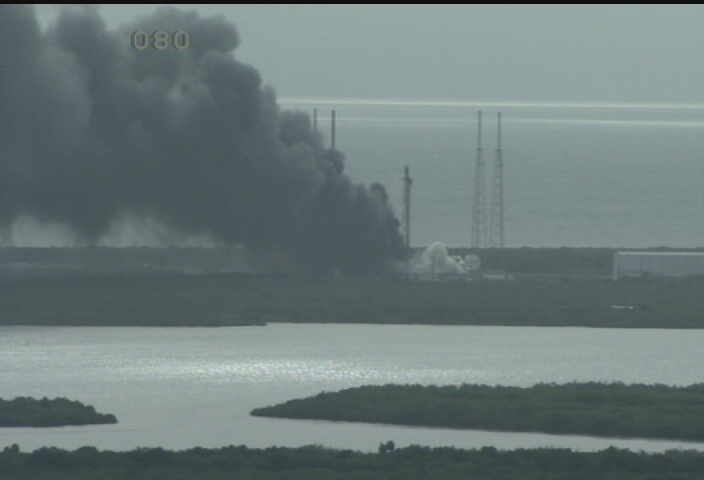Launchpad Explosion Destroys SpaceX Falcon 9 Rocket, Satellite in Florida

A SpaceX Falcon 9 rocket and its commercial satellite payload were destroyed by an explosion at their launchpad in Florida early Thursday (Sept. 1) during a typically routine test.
The explosion occurred at 9:07 a.m. EDT (1307 GMT), as SpaceX was preparing to launch the Amos-6 communications satellite for the Israeli company Spacecom from a pad at the Cape Canaveral Air Force Station on Saturday, Sept. 3. At the time, SpaceX was conducting a static-fire engine test on the Falcon 9. Such tests, which typically precede each SpaceX launch, involve firing the Falcon 9 rocket's first-stage engines while the booster remains secured to the launchpad.
"SpaceX can confirm that in preparation for today's static fire, there was an anomaly on the pad resulting in the loss of the vehicle and its payload," SpaceX representatives wrote in a statement. "Per standard procedure, the pad was clear, and there were no injuries." [SpaceX's Falcon 9 Rocket Explained]
UPDATE: USLaunchReport has released video of the explosion on its YouTube page:
The Amos-6 communications satellite reportedly cost $195 million and was built for Spacecom by Israel Aerospace Industries to serve as a replacement for Spacecom's Amos-2 satellite, which is expected end its mission this year. In October 2015, Facebook and the satellite communications company Eutelsat also announced a $95 million agreement to lease broadband capacity on the satellite from Spacecom, according to SpaceNews.
NASA webcam images of the SpaceX rocket's launch site — Space Launch Complex 40 — at the Cape Canaveral Air Force Station showed a massive plume of black smoke over the pad Thursday morning.
Breaking space news, the latest updates on rocket launches, skywatching events and more!
The Falcon 9 rocket is a two-stage booster designed to launch satellites and SpaceX's Dragon space capsules into orbit. The rocket stands 229 feet tall (70 meters) and uses rocket-grade kerosene and liquid oxygen for propellant.
The first stage of Falcon 9 is powered by nine Merlin rocket engines, while the second stage has a single engine to make the final push into orbit with payloads. It is the first stage of Falcon 9 that SpaceX would have been testing during Thursday's static fire operation.
SpaceX has had a long string of successful missions with the Falcon 9 rocket, with only one major failure. In June 2015, a Falcon 9 carrying a Dragon cargo ship for NASA exploded shortly after liftoff. SpaceX traced the problem to a faulty strut, and made upgrades before resuming commercial and NASA flights.
Editor's note: This story, originally posted at 9:38 a.m. EDT, was updated to include details from SpaceX's official statement on the explosion, which cited a pad anomaly, not the Falcon 9 rocket itself. It was also updated to correct the launch month of SpaceX's Falcon 9 failure to June 2015. An 11:46 a.m. EDT update pinned down the time of the pad explosion as announced by officials with the Cape Canaveral Air Force Station.
Email Tariq Malik at tmalik@space.com or follow him @tariqjmalik and Google+. Follow us @Spacedotcom, Facebook and Google+. Original article on Space.com.

Tariq is the award-winning Editor-in-Chief of Space.com and joined the team in 2001. He covers human spaceflight, as well as skywatching and entertainment. He became Space.com's Editor-in-Chief in 2019. Before joining Space.com, Tariq was a staff reporter for The Los Angeles Times covering education and city beats in La Habra, Fullerton and Huntington Beach. He's a recipient of the 2022 Harry Kolcum Award for excellence in space reporting and the 2025 Space Pioneer Award from the National Space Society. He is an Eagle Scout and Space Camp alum with journalism degrees from the USC and NYU. You can find Tariq at Space.com and as the co-host to the This Week In Space podcast on the TWiT network. To see his latest project, you can follow Tariq on Twitter @tariqjmalik.
